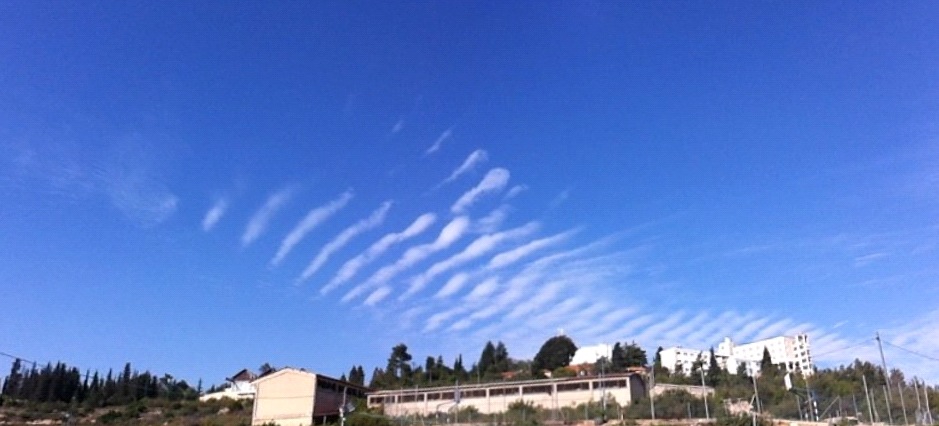Gravity waves in rain clouds over the Arava valley
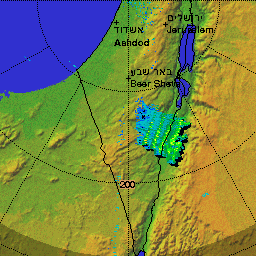
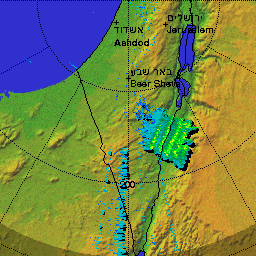
Comparing them reveals that the rain pattern is exactly the same (i.e., it didn't propagate). This can be see the short animation:
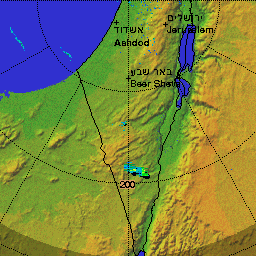
At first (before comparing consecutive snapshots!), I thought it was a traveling gravity wave (which I have seen quite a few times over Jerusalem, like the image at the bottom I took a day later), however, I then realized that it is a standing gravity wave. Namely, it is a wave formed by the sudden drop of air into the Arava valley. The wave which is excited is the one for which the phase speed is equal to the wind velocity. This is the wave which when traveling upstream will appear as standing and can therefore be amplified by the orographic feature. This is exemplified in this figure:
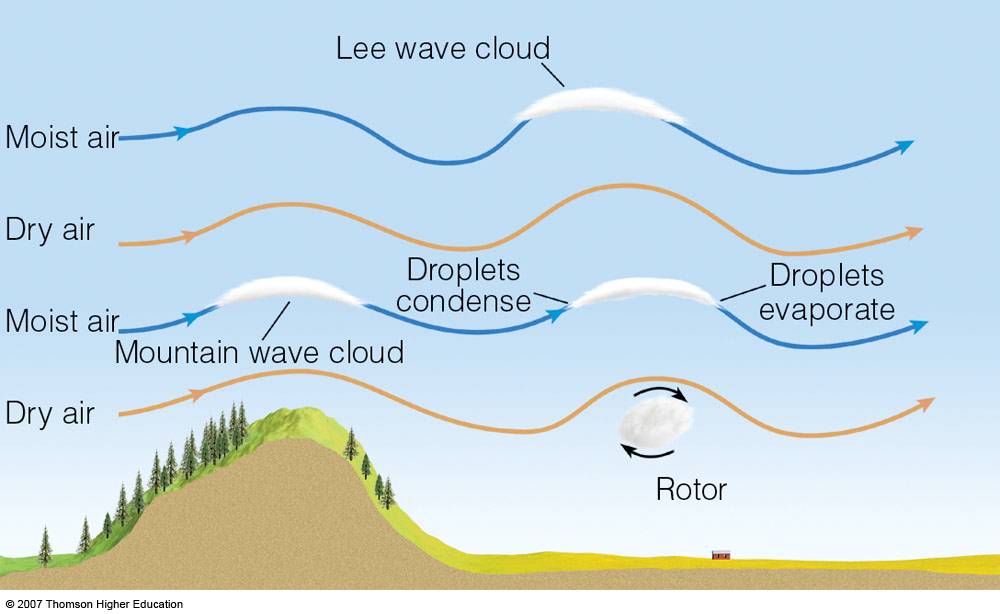
By comparing two radar snapshots, we can estimate the velocity of the rain cloud. It was 57 ± 12 km/hr. We can also measure that the distance between wave crests was 9.7±0.5 km. If the air would have been standing, this wave would have corresponded to an oscillation of 10 ± 2 min. This is actually consistent with my expectations.
The number to compare with is the Brunt-Väisälä (BF) frequency (or period). It is the oscillation that a parcel would have because of its buoyancy. Gravity waves have this oscillation for very large horizontal wave vectors but small vertical wave vectors. In the atmosphere, the BV oscillation period is typically 5 minutes or longer. It is longer for atmospheres which are more unstable and it becomes infinite when the atmospheres becomes convectively unstable (in convection, the BF is actually becomes imaginary).
Because the atmosphere wasn't very stable and because the wavelength is not very short (compared with the vertical scale height), we expect its oscillation period to be longer than the BV frequency, which itself is longer than the BV frequency of a very stable atmosphere. So, 10 mins is indeed reasonable.
A day after this radar image was taken, I saw another gravity wave. This time it was when waiting for my son's gym class to end:
Travelling gravity waves are not uncommon in this mountainous area (or hilly, if 2500ft is a just "hilly" in your book). But other phenomena, such as Kelvin Helmholtz clouds are...

